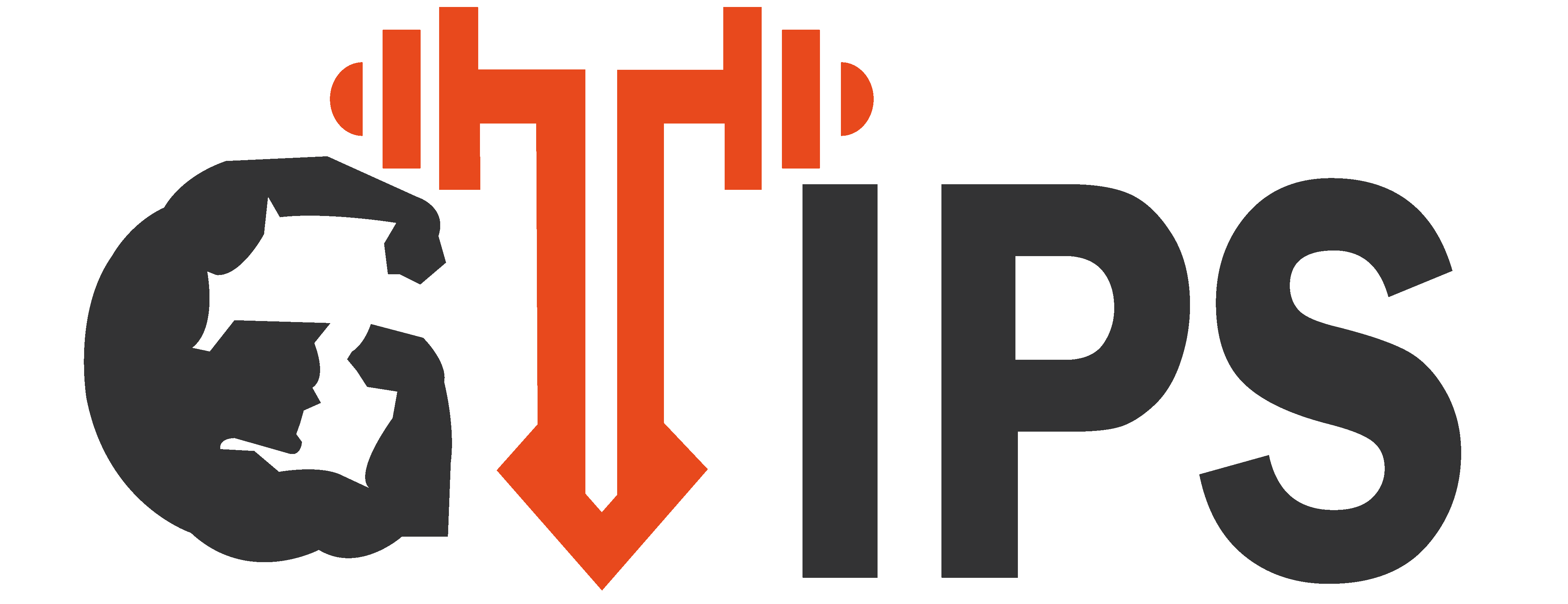Ever found yourself staring at your workout shoes, wanting to put them on but feeling meh? It’s a common struggle on the fitness journey, when excitement fades and life gets hectic. But remember, every step you take shows you’re committed to being healthier.
Studies show that positive self-talk can really boost your fitness performance. Just changing how you talk to yourself, using ‘you’ instead of ‘I’, can spark motivation. As you read on, you’ll find tips to help you beat those barriers and reach your fitness goals.
Key Takeaways
- Positive self-talk can significantly boost your workout performance.
- Pair workouts with enjoyable activities to increase motivation.
- Training with a workout buddy can enhance your motivation by up to 200%.
- Joining group classes provides accountability and varied workouts.
- Tracking progress increases your commitment to your fitness journey.
- Setting realistic goals can elevate your motivation by 60%.
Understanding Motivation and Its Importance in Fitness
Getting motivated is key for anyone starting a fitness journey. This drive shapes your choices and actions, affecting your dedication to fitness goals. Motivation in fitness comes in two main types: intrinsic and extrinsic.
Intrinsic motivation comes from within, often from enjoying physical activities. Doing exercise because it feels good can make you keep doing it. On the other hand, extrinsic motivation is about getting rewards, like losing weight or winning in sports. Both types can make your fitness journey better.
Working out with friends can make you stick to it more than doing it alone. Sharing your fitness journey with others can give you more support and motivation. Talking to gym staff or personal trainers can also help you find new exercises and stay safe.
Setting small, reachable goals can really boost your motivation by 31%. Tracking your progress is also a great strategy. Studies show that 67% of people feel more motivated when they keep a fitness journal or use an app.
Having someone to hold you accountable can make you 65% more likely to hit your fitness goals. Celebrating your small wins can make you feel accomplished and boost your motivation by 45%.
| Type of Motivation | Description | Impact on Fitness |
|---|---|---|
| Intrinsic Motivation | Engaging in activities for personal satisfaction | Leads to consistent participation and enjoyment |
| Extrinsic Motivation | Focuses on external rewards or outcomes | Encourages goal-oriented actions like weight loss |
| Social Interaction | Workouts with peers or accountability partners | Increases adherence and motivation rates |
| Progress Tracking | Monitoring performance through journals or apps | Boosts motivation levels significantly |
How to Stay Motivated for Fitness
Staying motivated for exercise can be tough for many. About 85% of people struggle on their fitness journeys. Finding good ways to keep motivation for workouts is key to beating these challenges. A study found that 100% of people said knowing their “why” is vital for staying motivated.
Setting realistic goals helps too, with 70% saying they feel more driven when goals are reachable. Most people, 90%, like smaller goals better than big ones. Also, 75% said making a plan helps a lot with motivation.
Changing up workouts is another smart move, with 80% saying it keeps things interesting. Tracking your progress is also a big motivator, with 95% agreeing. Having a workout buddy can increase motivation by 85%, helping you stay on track.
It’s important to celebrate small wins, with 80% of people saying it keeps them going. Using rewards, like a cheat meal or new workout clothes, can also help. Adding these tips to your fitness routine can make your journey more rewarding and successful.
| Motivation Factors | Effectiveness (%) |
|---|---|
| Finding Personal “Why” | 100 |
| Setting Realistic Goals | 70 |
| Tracking Progress | 95 |
| Accountability Partner | 85 |
| Celebrating Small Victories | 80 |
| Mixing Up Workouts | 80 |
Setting Clear and Realistic Fitness Goals
Setting fitness goals is the first step on your fitness journey. Clear and realistic goals give you direction and purpose. They help you track your progress. Using the SMART goals framework makes your goals clear and achievable.
This method ensures your goals are Specific, Measurable, Achievable, Relevant, and Time-Based. It boosts motivation and helps you create a plan to reach your goals.
SMART Goals: Specific, Measurable, Assignable, Realistic, Time-Based
Using the SMART format turns vague goals into clear objectives. For example, you might aim to:
- Lose 15 pounds in three months.
- Run a mile in under 5:30.00.
- Increase your squat from 100 lb. to 150 lb.
These goals are Specific, Measurable, Assignable, and Realistic. They help you stay focused and track your progress easily. This boosts your motivation.
The Power of Achievable Milestones
Achievable milestones are key to staying motivated. They are like checkpoints that let you celebrate small wins. This builds your confidence.
Breaking big goals into smaller steps makes them feel more doable. For example, start with short-term goals like working out three times a week. Or, increase your plank hold time by 5 seconds each time.
Tracking your progress shows you’re consistent and growing. Telling a friend about your goals adds accountability. Celebrating small wins creates a positive environment that keeps you motivated.
Finding Activities You Enjoy
Doing fitness activities you love keeps you motivated. Trying different workouts and classes helps you find what you enjoy. This makes exercise a regular part of your life.
Exploring Different Workouts and Classes
Trying new fitness activities keeps things interesting and prevents boredom. You might enjoy dance sessions or yoga. Joining a club adds motivation and accountability.
Having a workout schedule helps you stay consistent. Adding fun elements like music or games keeps exercising positive.
Intrinsic Motivation: Enjoying the Process
Intrinsic motivation is key to keeping up with fitness. Enjoying your activities makes you more likely to stick with them. Research shows many people enjoy exercise more than just for health reasons.
Whether it’s running with friends or dancing, enjoying these moments improves your fitness relationship.
Reflect on activities you loved as a kid or always wanted to try. There are many fitness activities to choose from. Finding the right ones makes fitness enjoyable and rewarding. For tips on effective workouts, check out this resource on workout routines for men.
Enhancing Your Workout with Music
Using music in workouts can make your exercise more exciting and fun. Picking the right songs helps you work harder, stay entertained, and even improve your performance. Many people find that a good playlist keeps them motivated and focused during their workouts.
Creating the Perfect Playlist
Creating a playlist that matches your workout’s intensity is key. Here are some tips:
- Choose music genres that resonate with you: Fitness fans often prefer hip-hop, rock, and pop.
- Match the tempo to your activity: For cardio, like running, a tempo around 160 bpm is great.
- Include songs that evoke strong emotions: Uplifting tunes can boost your mood and keep you going.
- Refresh your playlist regularly: Changing up your songs can prevent boredom during long workouts.
How Music Influences Workout Performance
Many studies show music’s benefits in workouts. Here’s what they found:
- Increase endurance: Music can help you push through fatigue.
- Improve exercise efficiency: Cyclists who match their pace to music use 7% less oxygen.
- Boost motivation: Energetic songs before your workout can boost your confidence.
- Enhance mood: Music can raise serotonin levels, making your workout feel better.
- Provide a distraction: Music can help you ignore discomfort during tough exercises.
Tracking Progress for Motivation
Tracking your fitness progress is key to staying motivated. Many people forget to document their efforts, leading to discouragement. By regularly checking your workout achievements, you gain insights into your consistency and celebrate small wins.
It’s important to focus on the actions you take, not just the results. Making healthy choices daily will lead to better body composition and fitness. Having a system to meet daily goals can boost your long-term success.
Try Jerry Seinfeld’s method of marking an X on a calendar each day. It shows the value of consistent action over perfection. Visual tracking systems are great motivators. Even missing a day, getting back on track quickly is vital.
Be clear about your goals for effective tracking. Keeping your goal trackers visible helps you stay focused. Set specific, achievable targets, like “take a 10-minute walk outside each day,” instead of vague goals.
| Tracking Method | Benefits | Tips |
|---|---|---|
| Apps | Convenient tracking and analytics | Choose user-friendly options |
| Journals | Reflective insights and milestones | Write daily for accountability |
| Workout Logs | Detailed analysis of workout performance | Be thorough in recording efforts |
Deep motivation is key to achieving your fitness goals. Celebrate every achievement, no matter how small, to keep your commitment to fitness strong. Remember, exercise can boost your energy and make you less likely to skip workouts.
Building a Support System
Creating a strong fitness support system is vital for staying motivated and committed to your goals. Working out with friends makes it more fun and keeps you on track. Studies show that exercising with a friend can make you happier and enjoy workouts more than when you’re alone.
Joining community classes also helps. It lets you meet people who want the same things as you. This creates a supportive environment where everyone encourages each other.
The Role of Workout Buddies
Workout buddies can really help your fitness journey. Research shows that having emotional support helps start and keep up with exercise. Friends or partners can push you to do more, thanks to the Köhler Effect.
Being around motivating friends can improve your performance. It helps you stay dedicated to your fitness goals.
Joining Community Classes for Better Accountability
Community classes provide a structured setting that boosts accountability. Group workouts build camaraderie and encourage regular attendance. Places like CrossFit and Orangetheory Fitness host events and challenges to foster team spirit.
Platforms like the Healthi app offer vibrant communities for advice and support. These connections are key to success, helping you reach your exercise goals. For more on community-based workouts, check out this resource: home workout guidance.
Incorporating Rewards Into Your Fitness Journey
Adding rewards to your fitness routine can really boost your motivation. It’s key to celebrate every win, big or small. Treats or new workout gear can keep you going. Knowing what rewards work best for you helps keep you moving forward.
Types of Rewards to Stay Motivated
There are many rewards to keep you motivated at different times. Here are some ideas to help you stay committed:
- Personal Treats: Enjoying a favorite dessert or a spa day can be a great reward.
- Fitness Gear: New workout clothes or accessories can make your workouts better.
- Experiences: Try something new, like a cooking class or a hike, to keep things fun.
- Milestones Celebrations: Celebrate big wins with a special event or outing.
- Social Sharing: Share your progress on social media or with friends for accountability and recognition.
By celebrating your wins and enjoying these rewards, you create a positive cycle. A well-thought-out reward system helps you see the connection between your hard work and success. This boosts your motivation to keep reaching your fitness goals.
| Type of Reward | Potential Benefits |
|---|---|
| Personal Treats | Boosts mood and provides a sense of celebration for achieving goals. |
| Fitness Gear | Enhances performance and commitment to workouts, fostering consistent participation. |
| Experiences | Keeps workouts enjoyable and introduces variety, reducing burnout. |
| Milestones Celebrations | Enhances the sense of achievement and motivates you to reach the next goal. |
| Social Sharing | Increases accountability and can inspire others, creating a supportive community. |
Embracing Mindfulness and the Mind-Body Connection
Practicing mindfulness in fitness makes your workouts better by making you more present. It helps you connect your mind and body, making exercise more enjoyable. Mindful breathing, for example, helps you feel your body’s sensations during exercise.
Adding mindfulness to your fitness routine can make you feel more satisfied and motivated. It helps you perform better by listening to your body and adjusting your workouts. Mindful movement boosts your physical health and reduces stress.
Here’s a look at the benefits of adding mindfulness to your fitness:
| Technique | Benefits | Impact on Mind-Body Connection |
|---|---|---|
| Mindful Breathing | Increases focus, reduces anxiety | Improved awareness of body movements |
| Gratitude Practice | Enhances mental well-being | Strengthens positive emotions linked to exercise |
| Mindful Movement | Reduces risk of injury, increases enjoyment | Fostering a balanced connection with physical activity |
Mindfulness in fitness makes exercise more enjoyable and fulfilling. As you improve your mind-body connection, workouts become more rewarding. Set realistic fitness goals that include mindfulness to improve your journey. Learn more about setting goals here.
Combating Boredom with Variety in Workouts
Sticking to a fitness routine can get dull. The Heart Foundation says boredom and not finding fun in exercise are big reasons people stop. Adding variety to your workouts is key. It keeps things interesting and exciting, helping you stay motivated.
Switching Up Your Routine to Avoid Plateaus
After the pandemic, keeping up with exercise has been tough. Many struggle with staying motivated and having enough energy. Adding new things to your routine can make a big difference. It can make you feel better and more excited about working out.
Here are some ways to mix things up:
- Try new places to work out to feel fresh.
- Set new goals to keep yourself interested and track your progress.
- Work out with a friend or join a class to add a social element.
- Make a new playlist that gets you pumped up.
- Try outdoor activities like hiking to reduce stress.
Changing how you structure your workouts can also help. Try circuit training with timed intervals to get your heart rate up. Shortening rest times or doing supersets can make your workouts more intense and fun. Trying new activities can also make exercise more enjoyable and help you learn more about yourself.
By always trying new things in your workouts, you can avoid getting stuck and keep enjoying your fitness journey.
The Importance of Recovery and Rest
Recovery is key in your fitness journey. Rest is vital to avoid injuries and keep you motivated. A study found that elite athletes often get injured from overuse, missing at least three weeks of training.
It’s smart to take up to three rest days a week for health. After hard workouts, easier ones help prevent too much strain. Switching between upper and lower body workouts helps muscles recover faster.
Resting every three to five days during cardio is also important. This keeps you performing at your best.
Nutrition is also critical for recovery. Active people need 1.2 to 2.0 grams of protein per kilogram of body weight daily. Complex carbs should match your activity level, between 3 to 10 grams per kilogram. Short yoga sessions of 10 to 15 minutes can also help on rest days.
Here are signs you need a rest day:
- Sore muscles
- Persistent fatigue
- Muscle or joint pain that doesn’t subside
- Emotional changes like irritability
- Sleeping issues
- Reduced exercise performance
Adding recovery to your fitness routine boosts both physical and mental health. It helps you stay excited about fitness for the long haul.
Visualization Techniques for Success
Using visualization techniques can really help your fitness journey. It lets you imagine your goals clearly, boosting your motivation and confidence. Many people, from athletes to business leaders, use it to reach their goals.
How Mental Rehearsal Boosts Confidence
There are two main types of visualization: outcome and process. Outcome visualization is about seeing the end results. Process visualization is about the steps to get there. Both can greatly improve your gym performance.
Regular visualization can turn your dreams into reality. Elite athletes like LeBron James and Michael Phelps use it to feel more confident and ready for games. It also helps reduce anxiety, making you more focused on your fitness goals.
To use visualization in fitness, follow these steps:
- Begin with reflection to find your values and goals.
- Think positively to stay optimistic.
- Do reflective exercises to understand your goals better.
- Use a vision board to show your fitness dreams.
Make sure to use all your senses in visualization. This makes the experience real and evokes emotions. Dancers and top athletes show that perfecting routines through visualization and practice leads to success.
Regular visualization helps you stay clear about your goals. It creates a push in your mind towards achieving your dreams. In about 30 days, you might see real results from your visualization.
| Benefits of Visualization | Description |
|---|---|
| Motivation | Keeps you excited about fitness. |
| Self-Confidence | Builds belief in your success. |
| Mental Rehearsal | Prepares you for real performance. |
| Anxiety Reduction | Reduces stress and nervousness. |
| Goal Clarity | Helps focus on what you really want. |
Conclusion
Keeping up your fitness motivation is key to reaching your health goals and feeling good. This summary of tips shows how important it is to have a mix of goals, fun activities, friends, and taking care of yourself. By using these tips, you’ll not only stay on track but also enjoy the journey.
Working with a personal trainer can really boost your motivation. They offer expert advice to help you lose weight, get stronger, and feel more confident. Also, being part of a fitness community, online or in person, gives you support and encouragement. This is vital for your fitness journey.
Don’t forget to include rest days in your routine. Too much exercise can lead to burnout, making you less excited about working out. Celebrating your fitness wins is a great way to keep up the good work. By following these tips, you’re setting yourself up for lasting success in staying motivated.
FAQ
How can I stay motivated for my fitness journey?
To stay motivated, set clear goals and find activities you enjoy. Track your progress and build a support system. Adding rewards and mindfulness can also help.
What are some fitness motivation tips?
Use the SMART framework for setting goals. Try different workouts and track your achievements. A strong support network and music can also boost your motivation.
Why is maintaining motivation for exercise important?
Keeping motivated is key for long-term health and fitness. It helps you stay on track, improve performance, and have a positive mindset about exercise.
What strategies can help combat low motivation during workouts?
Change your workout routine and set smaller goals. Work out with friends and take rest days. Mindfulness and enjoying the exercise can also help.
How does tracking my fitness progress enhance motivation?
Tracking progress shows your achievements, boosting motivation. It encourages you to keep going and stick to your fitness plan.
What role does music play in staying motivated during workouts?
Music makes workouts more enjoyable and intense. A good playlist can motivate you during exercise.
How can I find activities I genuinely enjoy?
Try different workouts and classes to find what you like. Exploring various activities helps you discover your favorites.
What type of rewards should I incorporate into my fitness regime?
Rewards can be small treats or big milestones. Treat yourself with new gear, a massage, or a favorite meal when you hit goals.
Why is recovery essential in a fitness journey?
Recovery prevents injuries, keeps you motivated, and prepares you for workouts. Rest, nutrition, and relaxation are key for performance.
How can visualization techniques improve my fitness motivation?
Visualization boosts confidence and self-efficacy. Imagine your success before workouts to increase motivation and performance.






